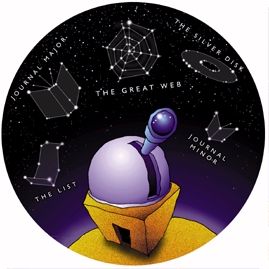The Access Catalogue Gateway to Resources
 Libraries are developing the access model of information provision and questions are raised regarding the method by which users discover the resources to which they have access. The traditional holdings model depended wholly upon the traditional catalogue. Conceptually it was a simple task to catalogue a library’s physical stock. It is clear, with the access model, that even when limited to traditional scholarly information the task of informing users of the resources to which they have access is huge. When the concept of information is broadened to include sources such as websites and discussion lists we find ourselves trying to harness the entire Internet. Libraries cannot compete with the main search engines or with the specialist subject gateways. So they will need to develop effective ways of indicating their access arrangements to their users. What they create might be called their “access catalogue” as distinct from their traditional “holdings catalogue”.
Libraries are developing the access model of information provision and questions are raised regarding the method by which users discover the resources to which they have access. The traditional holdings model depended wholly upon the traditional catalogue. Conceptually it was a simple task to catalogue a library’s physical stock. It is clear, with the access model, that even when limited to traditional scholarly information the task of informing users of the resources to which they have access is huge. When the concept of information is broadened to include sources such as websites and discussion lists we find ourselves trying to harness the entire Internet. Libraries cannot compete with the main search engines or with the specialist subject gateways. So they will need to develop effective ways of indicating their access arrangements to their users. What they create might be called their “access catalogue” as distinct from their traditional “holdings catalogue”.
Library websites: the story so far
Libraries have been constructing websites since the advent of the WWW, and before that the Gopher software was used to provide a gateway to the Internet. The typical library website fulfils two functions. It provides information about the Library and its services, and it acts as a gateway to networked information resources. Initially this paper is limited to conventional library resources such as bibliographic databases and electronic journals. Most libraries have adopted a fairly common approach to the gateway issue. A distinction is made between locally owned electronic resources (the holdings) and those that are available via the Internet (the access arrangements). The grey area in between includes resources such as the BIDS and EDINA databases, but nevertheless the general distinction has been maintained. A typical arrangement would be to list electronic information services in one area of the website and to list selected Internet resources in another. Resources that involve formal subscription or purchase are normally considered as owned. They would include CD-ROM databases and also major electronic journal sites on the Internet. Anything that is free to everybody would not be included in this category. This distinction was examined during a recent and ongoing redesign of Portsmouth University Library’s website. An informal survey of library sites in the UK was conducted to see how the Internet Movie Database was listed. The reasoning was that this resource, as a good example of a high quality database would probably have been bought by most libraries, and therefore included in their holdings list had it not been on the Internet and free. In all the websites visited, the IMDb, if listed at all, was among the selected Internet resources. Any distinction by source, cost, or technology was considered to be unhelpful. Portsmouth adopted an integrated approach with the sole criterion for inclusion of any item being: is it any good (assuming we could afford it if it was not free)? Thus a listing of bibliographic databases would include the IMDb and PubMed (a free version of Medline), locally networked services such as PsycLIT or ABI-Inform, and the various JISC-funded services from BIDS, EDINA and Midas. A listing of reference sources would integrate a locally networked OED on CD-ROM with an Internet subscription to Encyclopedia Britannica and with the many free dictionaries on the Web. A list of electronic journals would include subscribed titles and free titles .
What about the networked CD-ROMS?
If the access catalogue exists to indicate all of those resources to which the users have access behind a single web-based interface the first problem is the local CD-ROM network. Though many databases published on CD-ROM now have a web client (such as those from Silver Platter when mounted on an ERL server) the majority of such products may be accessed only via local campus networks using either Novell Netware or Windows NT. The most elegant solution to this problem is called Winframe from Citrix which will enable Windows applications to be accessed in terminal mode, where all the processing takes place on the (NT) server. This arrangement makes it possible to extend the life of otherwise redundant 486 PCs acting as terminals. Microsoft has now adopted this technology and incorporated it, under the name of Windows Terminal Server (formerly Hydra), in the upcoming Windows NT version 5. However, it is the ability to access Windows applications across the Internet using Citrix’s ICA (Independent Console Architecture) client that is of prime concern here. The client can be used either alone or as a plug-in to Netscape. In the latter mode it becomes possible to present an integrated list of databases regardless of technology. The user would only need a web browser to be able to access any available networked database. There are, however, licence as well as technical considerations. Database producers and publishers will often require separate agreements and/or additional licence fees for off-campus access. Some, such as PsycLIT, may not be accessed off campus at all.
What else to include?
The access catalogue will need to include more than just bibliographic databases and electronic journals. The main questions concern the policy for providing access to websites and other Internet resources such as discussion lists, newsgroups and FTP sites. Virtually all library websites provide a select list of Internet resources. A typical arrangement is to use subject librarians to maintain collections related to local needs. The main debating points are the extent of this local work and how much they should rely on subject gateways or general search engines to provide access. As a minimum library websites should point to these gateways and search engines, and to other general resources. But the library should go beyond this and provide a more extensive collection of resources, tailored to local needs and presented in an integrated manner. There is also the broader question of the general online learning environment that will be effective in integrating information resources within the general processes of teaching, learning and research. Here, information resources will be available in a variety of ways and not just via the access catalogue. Reading materials associated with particular courses could be linked directly from that course’s home page to course announcements, lecture notes, exam papers, course-based discussion lists and so on. The access catalogue is conceived as the principal interface to selected information resources. But there would also be customised views of resources based on the interests, or access rights, of staff and students. Access would be controlled by information contained in the login script of each user. The undergraduates, for example, might see a listing of their current courses linked to appropriate information resources. This in turn raises interesting questions about exposing students to the totality of available information and is reminiscent of the debate about undergraduate libraries.

Building the access catalogue
Building the access catalogue is perhaps the most difficult issue. How will it be created? More specifically, should it be built by using, for example, the library’s OPAC capabilities or by using software designed for creating Web gateways? Or perhaps a local solution may be preferred? The OPAC is one tool that provides access to information in the modern library. It has the specialist function of describing local physical resources. Notwithstanding the possibility of placing URLs in the record and configuring the welcome screen, it could be said that the OPAC is not necessarily the right tool for the job. The access catalogue, as a gateway to networked resources, needs to use traditional cataloguing but it will also benefit from being designed for its own particular purpose. The OPAC is one component of the available information within the hybrid library. The access catalogue is conceived as the complete picture. The latter includes the former, not the other way around. The access catalogue and the OPAC might be linked, or integrated more tightly, by means of the Z39.50 protocol. However, it should be stressed that the model discussed here is based on integration mainly at the presentational level. Higher level integration issues, such as a single interface to interrogate all available databases regardless of source, are a logical next step but outside the scope of this paper.
Search and browse?
Books and journals are resources that will normally be searched for by the known elements of author and title. Reference materials will not typically be known about in advance. Users will benefit from being guided to these materials and the access catalogue should have this as one of its prime functions. The same can be argued for other materials such as websites, discussion lists and electronic journals. A good model for the access catalogue is that of the searchable directory, such as Yahoo. Structured browsing is, in other words, as important as searching, especially when the user is not sure what he or she is looking for. OPAC systems are not designed to provide this approach. They can meet part of the need, namely for searches limited by resource type. But the hierarchical browsable directory that is now a standard feature of most Internet search engines and eLib subject gateways is, I believe, not possible with the current generation of OPACs. Within the access catalogue all resources would be categorised by type. When searching, these categories would be available as qualifiers. They would also be available when browsing by subject. At the appropriate subject level in the hierarchy, resources would be presented in these categories.
Access cataloguing
If we are to develop the access catalogue we should do so with the same professionalism that we bring to the holdings catalogue. In practice this means that resources should be recorded properly and consistently. It appears that most current contents of selected Web sites are not formally catalogued or well maintained. The cataloguing function should be extended to the access catalogue though the implications of this for workloads will need careful consideration. There is another question: should the metadata record contain classification keywords or notation (e.g DDC), or should subject retrieval be based on free text searching of the title and descriptive text? It should be noted that a descriptive text element is not common in the holdings catalogue but is common in web gateways. As for the structure of access catalogue records the options are to develop a home grown system or adopt a networked resource description (or metadata) format such as Dublin Core. The advantage of Dublin Core lies in the potential for interoperability with other standards such as Z39.50
Conclusion
The purpose of this article has been to argue for an integrated approach to the presentation of electronic information resources regardless of location, technology platform, or cost. The notion of the access catalogue has been proposed as the vehicle for this combined collection and some of the practical issues relating to its construction and management have been considered.
References
Reference: Dempsey, L. and Heery, R. (1998) Metadata: a current view of practice and issues. Journal of Documentation, 54(2), 145-72.
